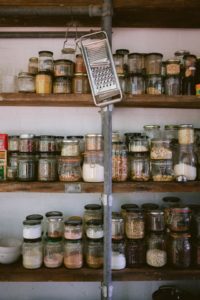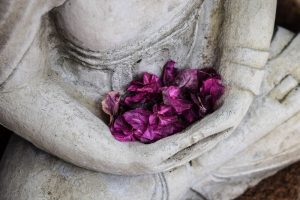
Guide to Pantry Essentials
I am often asked what I consider to be pantry essentials, i.e. what basics do I have on hand to ensure we are able to eat quite well and follow a healthy diet. Here’s what I see as essentials to have in my pantry.
Dried beans/pulses like borlotti beans, chickpeas, black beans, lentils and moong dahl. Dried beans can be soaked overnight and cooked the next day. Beans/pulses are a great source of protein and fibre, which helps slow glucose absorption and keeps blood glucose levels stable. Dried beans/pulses can be used to make lots of delicious meals e.g. beans and rice, and dahl, or pulses can be added to a meat based casserole.
Rice – I have brown rice, black rice, white rice, red rice and wild rice, as well as gluten free grains quinoa and buckwheat. When I cook rice, I often add quinoa, buckwheat and chia seeds to add extra fibre. I use leftover cooked rice to make one of my favourite Thai dishes – Andaman fried rice – I add extra vegetables, to make sure we get our daily serves of vegetables, and top with nuts and a fried egg for protein.
Nuts and seeds are good sources of healthy fats, fibres, and a range of essential vitamins and minerals. Sometimes I’ll add nuts to vegetarian meals for extra crunch and additional protein.
Add Herbs and Spices
For me a good range of dried herbs and spices is essential for adding flavour to food. With the right herbs and spices you can make really tasty food from basic ingredients e.g. curries, Asian and Middle Eastern inspired food, add flavour to a salad. I’m a little hard core when it comes to curries etc, I like to mix my own herbs and spices together to make the spice mix. Having said that, a good quality curry powder is essential to my pantry.
Dried Fruit
Dried fruit can be used in sweet and savoury meals. Dates, prunes, apricots, raisins, cranberries and figs are not only sweet, they provide essential fibre and antioxidants. Don’t overdo the dried fruits, while delicious dried fruit is high in sugar and quickly adds calories to what you eat.
Canned and Frozen Foods
While I do have dried beans/pulses, I also have canned ones on hand for a quick addition to a meal.
Canned food is comparable to fresh or frozen food. Canned lentils can be used to make a delicious lentil salad, or added to soups and stews. One of my favourite super easy soups to make has one can of mixed beans, 2 cups of fresh or frozen mixed vegetables, and 1 litre of stock; plus fresh or dried herbs for flavour. Always drain canned beans/lentils and rinse well before use.
Canned tomatoes, canned salmon, and baked beans all make great additions to your pantry.
In the freezer I usually have some frozen vegetables and frozen berries. (I also have frozen meals I prepared and froze earlier for those busy days when I don’t have time to cook).
Good Oil
Good quality oil is essential for both cooking and making your own salad dressings. I always have extra virgin olive oil, good quality vegetable oil and a selection of different vinegars in my pantry.
Fresh is Best
Every week I buy a range of fresh vegetables and fruits to include in our weekly meals. Local Farmers Markets, and/or fresh food markets are great places to buy fresh produce. Add to small amounts of animal protein and you have the ideal plant based diet.


